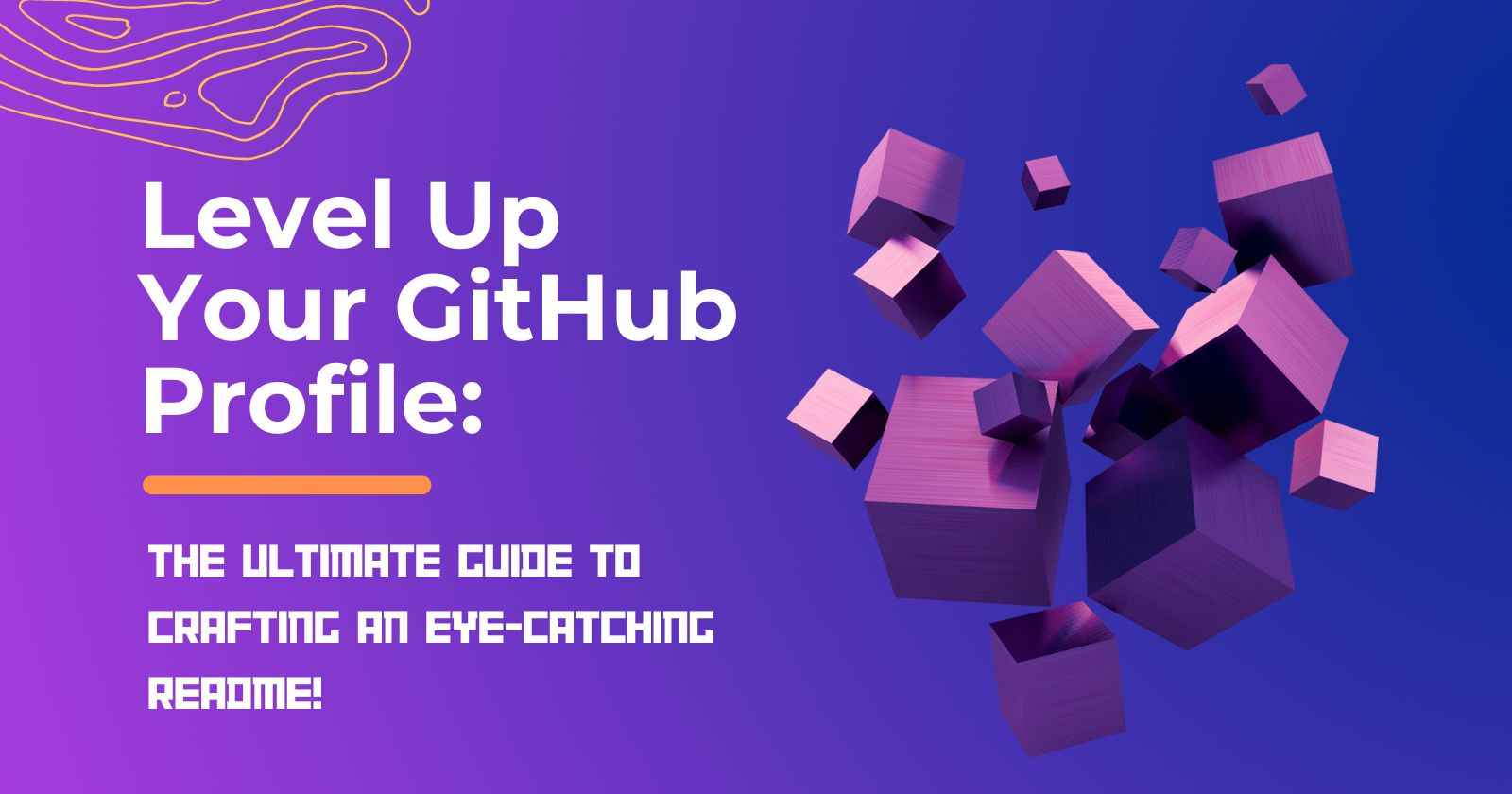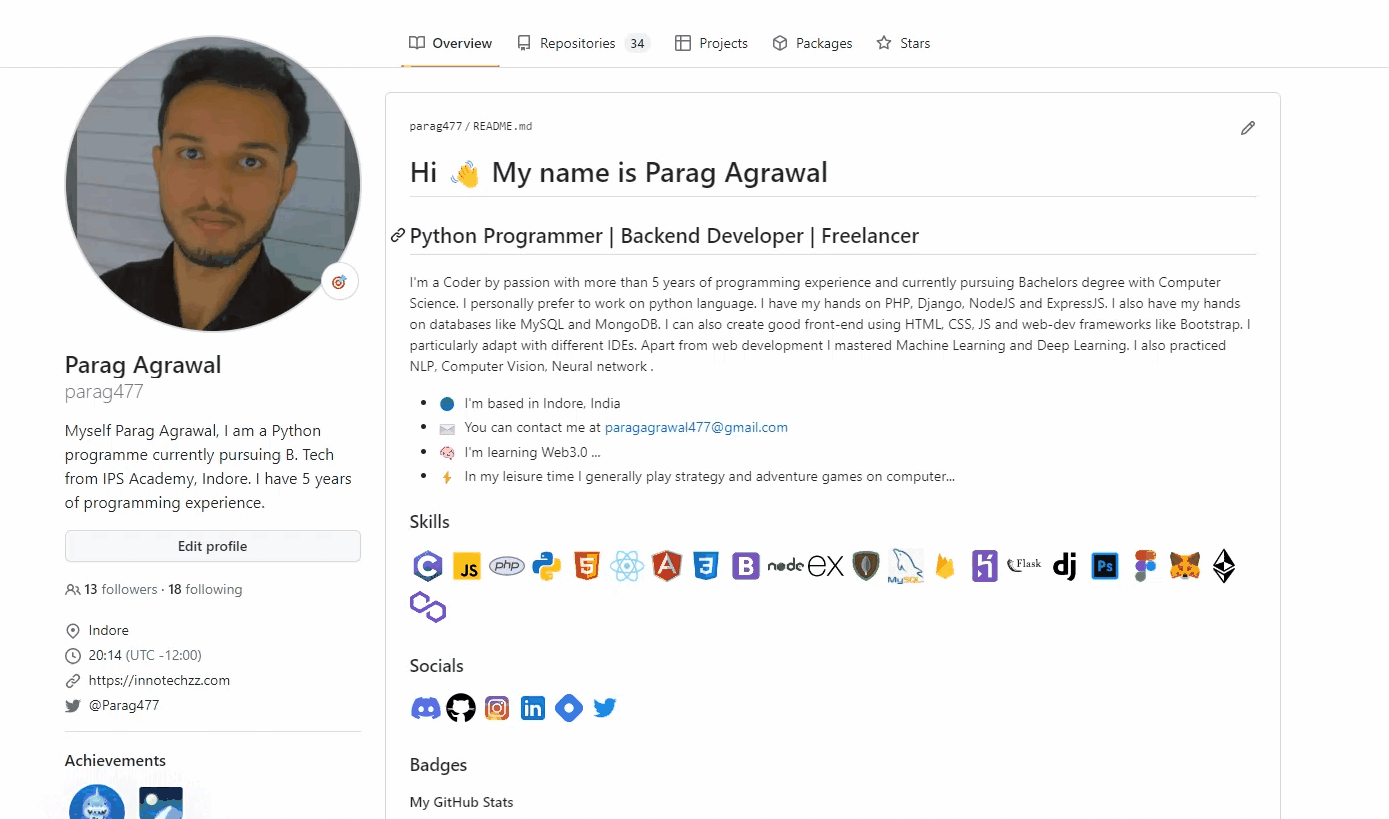Level Up Your GitHub Profile: The Ultimate Guide to Crafting an Eye-Catching Readme!
 Parag Agrawal
Parag Agrawal
Your GitHub profile is more than just a collection of repositories. It's your professional identity, a showcase of your skills and accomplishments, and a gateway to new opportunities. One of the most critical elements of your GitHub profile is the README file. In this comprehensive guide, we will walk you through the steps to craft an eye-catching README that will make your profile shine. Get ready to level up your GitHub game!

Understanding the GitHub README:
Before we dive into the details of crafting an exceptional README, let's first understand its significance. The README serves as an introduction to your project, providing essential information to potential collaborators, employers, and open-source contributors. It sets the tone, showcases your project's features, and can even influence how others perceive your work.
Crafting an Engaging README:
Choosing an Appropriate Title and Description:
The title and description of your README should be engaging, clear, and simple. Make it simple for others to quickly understand the gist of your project by putting it best into a few words.
Structuring the Content Effectively:
Structuring the Content Effectively: Organize your README into sections that flow logically. Start with an introduction that provides context and briefly explains the purpose of your project. Follow it up with sections that cover installation instructions, usage examples, and any additional details relevant to your project.
Showcasing Project Features and Functionalities:
Highlight the unique features and functionalities of your project. Use bullet points or subheadings to make them stand out. If applicable, include screenshots or gifs to provide visual cues and demonstrate your project in action.
Highlighting Notable Achievements or Contributions:
If your project has received recognition, accolades, or notable contributions, make sure to mention them. It adds credibility and showcases the impact of your work.
Incorporating Visuals and Media Elements:
A picture is worth a thousand words, and visuals can greatly enhance the appeal of your README. Include relevant images, diagrams, or even embed videos that help users better understand your project.
Formatting and Styling:
Using Markdown Syntax Effectively:
GitHub supports markdown syntax, which allows you to format your README elegantly. Familiarize yourself with basic markdown elements like headers, lists, links, and code blocks to structure and format your content.
Tips for Organizing Content:
Break down your README into digestible sections using headings, subheadings, and bullet points. Consider using tables to present information in a structured manner, making it easier for readers to navigate and comprehend.
Incorporating Code Snippets and Syntax Highlighting:
If your project involves code, include relevant snippets in your README. GitHub provides syntax highlighting for various programming languages, which makes the code more readable and visually appealing.
Enhancing Readability with Proper Spacing and Formatting:
Ensure that your README is easy on the eyes. Use appropriate spacing between paragraphs and sections to avoid overwhelming the reader. Pay attention to font size and style choices, ensuring readability across different devices.
Showcasing Collaborative and Social Elements:
Integrating Badges, Shields, and Status Indicators:
Badges and shields add visual interest and provide valuable information at a glance. Include badges for build status, code coverage, or any other relevant metrics to showcase the quality of your project.
Displaying Project Documentation and Licenses:
If your project has comprehensive documentation or specific licensing requirements, link to them in your README. It demonstrates your commitment to transparency and encourages users to explore further.
Linking to Relevant External Resources and Profiles:
If your project relies on external resources or is part of a larger ecosystem, provide links to those resources in your README. This helps users discover related content and gain a deeper understanding of your project's context and dependencies.
Encouraging Engagement and Contributions:
GitHub is all about collaboration, so make it easy for others to contribute to your project. Include guidelines for bug reporting, feature requests, and pull requests. Provide clear instructions on how others can get involved, fostering a vibrant and inclusive community around your project.
Optimizing for Discoverability:
Choosing Appropriate Keywords and Tags:
Optimize your README for searchability by using relevant keywords and tags. Think about the terms that potential users or collaborators would search for and incorporate them strategically throughout your README.
Utilizing GitHub's Built-in Features:
GitHub provides several features to enhance discoverability. Take advantage of topics to categorize your project, and consider pinning important repositories to your profile for increased visibility.
Cross-Linking Between Projects:
If you have multiple projects on GitHub, cross-linking them in your READMEs can help users navigate and explore your body of work. It also showcases your versatility and breadth of expertise.
Leveraging Social Media and Developer Communities:
Extend the reach of your GitHub profile by sharing your projects on social media platforms and engaging with relevant developer communities. Join discussions, showcase your work, and network with like-minded individuals to attract attention to your profile.
Keeping Your README Updated:
The Importance of Maintaining a Current and Relevant Profile:
Regularly update your README to reflect the latest information about your project. Outdated or incomplete information can create a negative impression and discourage engagement.
Regularly Updating Project Information and Status:
If there are significant updates or changes to your project, make sure to reflect them in your README. This includes new features, bug fixes, or improvements. Users appreciate transparency and knowing that the project is actively maintained.
Incorporating User Feedback and Addressing Issues:
Listen to your users and address their feedback and issues promptly. Update your README to include solutions to commonly reported problems or address concerns raised by the community. This shows your dedication to user satisfaction and continuous improvement.
Conclusion:
Crafting an eye-catching README is a powerful way to level up your GitHub profile and make a lasting impression on potential collaborators, employers, and contributors. By following the tips and strategies outlined in this guide, you can create a compelling README that effectively showcases your projects and attracts the attention they deserve. Invest time and effort into crafting a captivating README, and watch your GitHub profile soar to new heights. Get ready to stand out from the crowd and make your mark in the vibrant GitHub community!
Subscribe to my newsletter
Read articles from Parag Agrawal directly inside your inbox. Subscribe to the newsletter, and don't miss out.
Written by

Parag Agrawal
Parag Agrawal
Hi there! I'm a passionate and experienced developer with a diverse skill set and over 5 years of experience in software development. I hold a B.Tech degree in Computer Science and have expertise in various programming languages including Python, JavaScript, PHP, C, and C++. I'm also proficient in front-end technologies such as HTML and CSS, and have hands-on experience with popular frameworks like React, Redux, MaterialUI, Vue, Vite, and Bootstrap. On the back-end, I have worked with NodeJS and ExpressJS for building robust and scalable web applications. I'm also well-versed in database technologies like MongoDB and MySQL, enabling me to design efficient and optimized databases for applications.